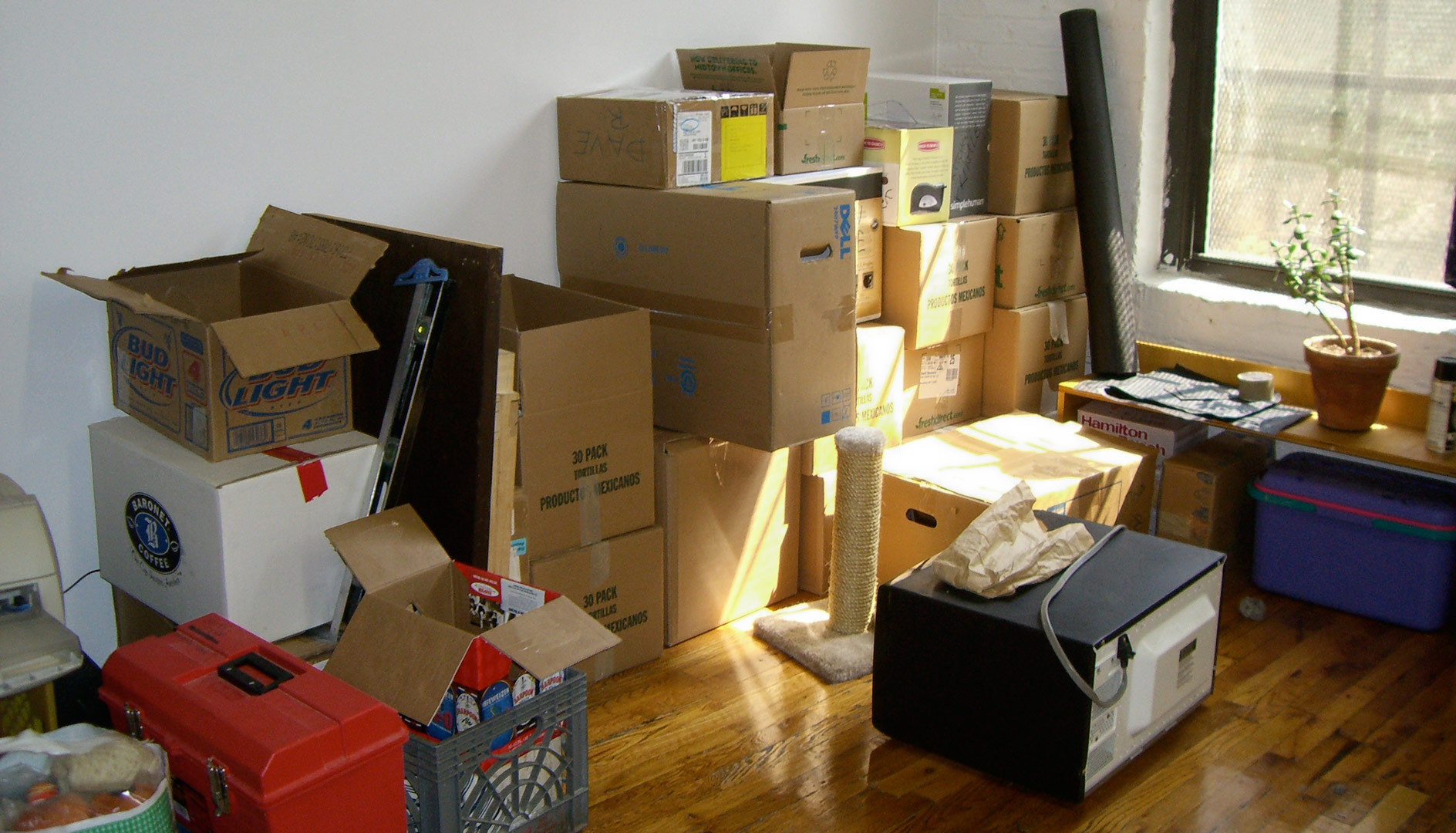
© Becky Stern https://www.flickr.com/photos/bekathwia/
Beforehand:
“Yes, let’s do it!”
After so many years, we were finally going to realize our dream of pedaling around the world!
We relished the moment. That is until we entered our spare rooms…
They were cram-packed with books and CDs. But even worse was our attic. There we had managed to stack crates to the ceiling, filled with tools, slides, photo albums, and assorted junk.
What were we going to do with it all?
After checking out how much storage costs, (Aigh!) We set about getting rid of it.
The early optimism soon turned to despair. There is nothing more disheartening than spending entire weekends sorting stuff. Then afterward looking around to see that you’ve hardly made a dent.
Russ Roca and Laura Crawford of The Path Less Pedaled also downsized before their trip. Read about it here, here, and here.
The downsizer’s mantra:
“You own more than you think you do. And it will take longer than you think it will to get rid of it all.”
For those people who don’t want to get rid of too much, here are some long-term storage tips.
The downsizing begins:
Start early because you need more time for sorting.
We were never able to get rid of everything in one go. 75% would either go on the recycled paper stack, the sale pile, or in the bin bag. But 20% ended up on the ‘save’ pile. “I just have to keep this!”
It was an emotional thing. We ended up re-visiting our ‘keep’ pile several times since it became easier to purge things after we re-visited it.
Plus we regularly came across items that brought back memories, such as old school yearbooks. So we’d stop sorting to page through the books, remembering those days and our fellow students. Digging through our belongings turned out to be a bit emotional at times.
Photograph sentimental stuff
Take pictures of souvenirs and sentimental items. Even though you haven’t looked at them for years (because they were buried underneath the rest of your belongings) it’s still emotionally difficult to get rid of them. By taking pictures that you can view later, it’s easier to bin them.
Set analogue media over to a digital format
We’re from an earlier generation. So our house was full of records, CD’s, cassettes, photos, and analogue slides. My husband couldn’t bear to lose any music and he spent innumerable hours digitalizing it.
For the analogue slides, we were able to get hold of a slide scanner with an automatic feed. Even though it took a couple of months to scan them all; it didn’t cost that much effort.
We also ended up digitalizing all of our photographs via a flatbed scanner and only saving a shoebox full of our most sentimental snaps.
Selling stuff
We both worked full-time until just before our departure date. So that only left weekends for sorting, trip planning, and selling off our possessions.
As everybody knows who has ever sold something via the internet, it’s a time-consuming process. You have to research prices, take good photos, write descriptions, etc. etc. etc. We just didn’t have the extra time to do it and ended up only selling our larger, pricier items that we didn’t regularly use.
Smaller items were donated to friends and a second-hand store bought our used furniture in one go. (We didn’t own designer furniture.)
Selling tips from others
Some downsizers have had success selling their possessions via a ‘stuff blog’ (posting photos of all of their for-sale items on a website) or making a ‘stuff page’ on facebook and sending the link to all of their friends.
Others have turned their apartment into a garage sale by putting price tags on everything. Then when someone came around to pick up an item– they would ask if there was anything else they were interested in.
Storage Tips:
Calculating storage costs
The Shurgard website indicates how much it will cost to store your belongings via a space calculator.
For example, storing a two-person couch plus salon table near to where we live would cost upwards of 40 Euros a month.
Note; it is possible to find cheaper storage units in rural areas.
Curver plastic storage boxes
Garages are known to flood and attics are often full of mice and insects. So plastic crates with lids are a better way to go, at least for the boxes that will be sitting on the floor. Plastic boxes also hold up better when they are stacked one on top of another.
Print out large labels with your name and e-mail address on them and stick them on all sides of your boxes.
We stored our boxes in a girlfriend’s attic alongside her belongings and other people’s stuff. (Her attic was the storage depot for a whole slew of friends). Every time our friend needed something, she would rummage through all of the boxes searching for it. But she left our boxes alone since they were labeled. Plus if something happens with the person whom you are storing your boxes with (such as they have to move house) other people will know who your boxes belong to and can contact you.
Label the box that contains extra winter/summer clothes.
A couple of times during our trip we ended up back home for a week. We wished that we had labeled which box contained our extra clothes. That would have saved us the effort of opening every box looking for them.
Label the box that contains replacement camping and cycling gear.
If you need some replacement gear sent to you, it’s much easier for your mom to find it if she only has to rummage through one box.
Thoughts after the trip
On our stuff
Now that we’ve been back some time, we still can’t think of anything we got rid of and now miss. Even today, we can’t remember most of the stuff we purged!
In fact, many of the things we stored during our trip, we ended up getting rid of shortly after coming back.
Is it because we’ve become extreme “non-hoarders”? Not really. It turns out that that’s quite common with people who have downsized before their trip. Other cyclists also spoke of opening their 10 storage boxes and looking at half of their stuff thinking, “Why did I save this?”
Our new home
We went from living in a 100m2 house to a 30m2 apartment afterward. We love our new apartment, even after living some time in it.
But we do know other people who were forced to downsize from 200m2 to 100m2 homes. They still feel depressed about having to move to smaller living quarters.
Why do we feel different from them? During our RTW trip, we lived out of bike panniers and a 3-person tent. So, our new 30m2 apartment is a real step up for us qua space and luxury.
And we also enjoy the lower living costs of rent and utilities. As another ‘downsizer’ said, “It seems insane now, to pay for larger and larger living spaces just to store our stuff- but that’s what we did.”



